
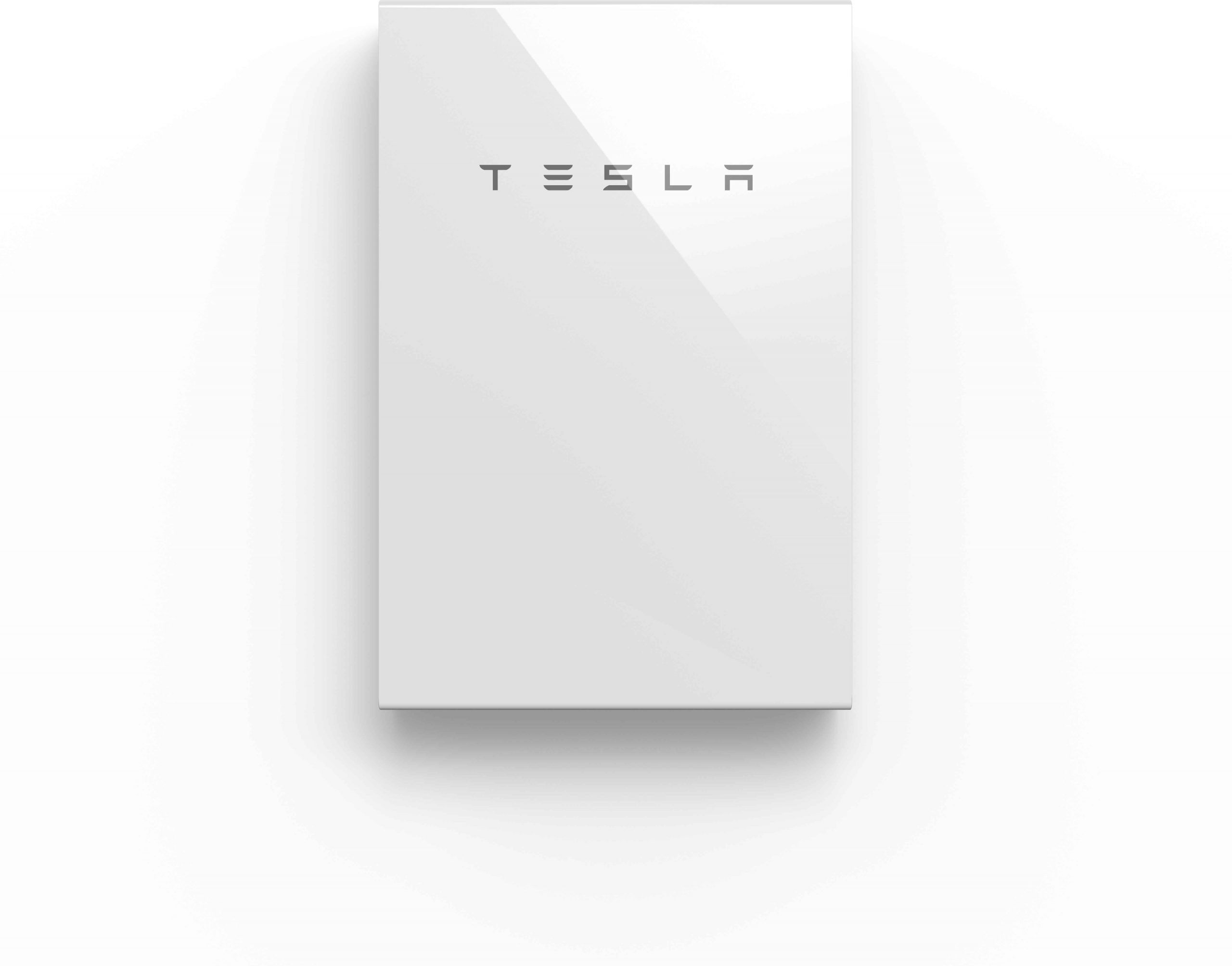
UPDATE FROM TESLA – MARCH 2023. TESLA POWERWALL NO LONGER SUITABLE FOR OFF-GRID.
To provide the best possible experience to our customers and ensure that our products continue to meet their evolving needs, we will be focusing on grid-connected Powerwall systems and pausing future Off Grid Powerwall installations.
We recommend you inform customers who are considering off-grid installation as soon as possible. Off grid systems installed before March 31st 2023 will continue to be supported.
Kind Regards, Account Manager – Energy Products, Tesla
Original Article: July 2020
In 2010, a relatively unknown company called Tesla opened a small factory in California and started making electric cars powered by lithium batteries.
Nobody paid much attention at the time, and most of the people that did said they were crazy to even try. After all, lithium batteries were too expensive, too hard to manufacture, and could never store enough electricity to be useful, right?
Oh, how the times have changed.
The Tesla Powerwall has been a revolution in solar energy storage, providing a simple yet powerful battery solution that captures excess solar power during the day and uses it to power your home at night.
Since launching version 2 of the Powerwall in 2016, Tesla has sold more than 100,000 battery packs – and at times has even struggled to keep up with the demand.
But one primary drawback of the Powerwall is that it was only designed to work with grid-connected properties – combining solar and batteries with the safety net of mains power.
That is, until now.
Tesla recently announced the release of a new off-grid version of the Powerwall, enabling people in standalone properties to enjoy a sustainable lifestyle using solar energy and lithium battery storage.
But how does the Tesla Powerwall work – and how do you know if it’s the right choice for your off-grid home?
Let’s take a deeper look and find some answers.
In many ways, the off-grid version of the Powerwall is similar to its grid-connected counterpart. Solar panels automatically power your home during the day, and any excess solar generation is stored in the batteries. When your electricity consumption is higher than your solar production, the Powerwall supplies extra power automatically to maintain a continuous supply of energy.
The key difference with the off-grid Powerwall is that because you don’t have mains electricity – your batteries rely purely on solar generation to recharge. With that in mind, you need a solar array powerful enough to meet your daily energy needs while also charging your batteries – even during extended periods of bad weather.
For peace of mind, all Powerwall systems at Off Grid Energy are designed to include an automatic generator, ensuring that you always have a reliable source of backup power. We also pair the Tesla Powerwall with Austrian-made Fronius solar inverters – the brand we believe to be the most advanced and reliable on the market.
Each Tesla battery has a capacity of 13.5 kilowatt-hours (kWh), and you must install a minimum of two Powerwalls in an off-grid system – meaning you’ll have at least 27 kWh of total storage capacity.
In Australia, the average home uses around 18 kWh of electricity per day. And so – at least based on averages – two Powerwalls can be enough to meet the demands of many energy-efficient homes. If you have a larger property with air conditioning, water pumps, a swimming pool, or multiple fridges and freezers – you may need additional Powerwalls and greater solar capacity to cover your energy needs.
You can connect up to 5.0 kW of solar to each Powerwall, meaning you can pair two Powerwalls with a 10.0 kW solar system – which is typically between 30 and 36 panels.
On average, a 10.0 kW solar array will generate around 40 kilowatt-hours of electricity per day – but this can be as low as 10 kWh in the middle of winter and as high as 70 kWh in the peak of summer. At Off Grid Energy, we design each solar and battery system for ‘worst case’ conditions and include a hard-wired generator to supply backup electricity. As you may gather, the more solar and battery capacity you have, the less you will rely on a generator – and vice-versa.
Tesla’s home battery is one of the most robust on the market, but you still need to make sure it’s located in a place that maximises its efficiency and lifespan.
In other words: a Powerwall in a hot shed is not a good idea.
The off-grid Powerwall must be located within the ‘heat envelope’ of the house – which is inside the boundary that separates the conditioned and unconditioned areas of your home. For the Powerwall to work efficiently and retain its warranty, it must be located in an area that maintains a constant temperature between 10C and 30C.
At Off Grid Energy, we recommend installing the Powerwall inside your garage – and on a wall that isn’t directly adjacent to a habitable room. The battery system is waterproof, but an undercover area with a stable temperature is the best way to maximise the lifespan of your equipment.
The Powerwall has a long list of impressive features, but there are also some factors you need to consider when selecting a Tesla battery for your off-grid home.
The Powerwall is only available for homes with single-phase power, meaning that it’s not suitable for a 3-phase connection. If your home has 3-phase power, we can design multi-phase battery systems to meet your unique energy needs.
The Tesla battery system relies on an internet connection for commissioning, monitoring, and error-detection in the case of a system fault. If you don’t already have internet and you want to install a Powerwall, you can either arrange the internet in advance, or have it connected at the same time as the Powerwall installation.
When we design off-grid solar systems, we don’t just look at how much electricity you’ll need over 24 hours – but also how much you might need at any given time.
Each Tesla Powerwall has a maximum output rating of 5.0 kW, which means it can supply up to 5000 watts of electricity at any one moment. This means that two Powerwalls can provide up to 10,000 watts, and three Powerwalls can supply up to 15,000 watts. As part of your system design process, we take a detailed look at your appliances, living habits, and the number of people – and use this to assess how much energy you will need to power your daily lifestyle.
Not all appliances draw large amounts of power, but some consume a lot of electricity over short periods. These can include kettles, vacuum cleaners, electric heaters, irons, microwaves, toasters, and hair dryers – just to name a few. As a general rule of thumb, appliances that generate a lot of heat are likely to consume a high amount of electricity.
In the same way that grid-connected solar and battery systems are backed up by mains power, every off-grid home needs a generator to supplement the renewable energy supply. This can be due to long periods of bad weather, battery or inverter faults, or times when your electricity consumption spikes unexpectedly.
All of our off-grid Powerwall systems are designed to include a compatible hard-wired diesel generator, which ensures you always have backup electricity at the ready. Currently (June 2020) the only generators that are compatible with a Powerwall off grid system are the Kubota GL Series or the Himoinsa HYW Single Phase Series.
*Update July 2022: Powerwall can now only charge from solar; generator charging is no longer supported. Generators will now be integrated downstream of the Powerwall system via a transfer switch to support loads during periods of low energy. Any generator can now be used, provided it can support customer loads.
Two Powerwall batteries can accommodate up to 10.0 kW of solar capacity, but this may not be enough to meet the electricity needs of every home. If you need more solar panels, you will also need an additional Powerwall – but this may exceed your energy requirements or budget. As all of our off-grid systems are highly customised, we take all of these factors into account to recommend a system that best fits your needs – now and in the future.
Since its launch back in 2016, the Tesla Powerwall has set the standard for home energy storage. No other company has been able to match Tesla’s combination of battery capacity, ease of installation, monitoring, reliability, and overall value for money.
For many off-grid properties, two or three Tesla Powerwalls combined with a generous solar array can be enough to provide year-round electricity while also taking up very little space. But it’s also important to bear in mind that some aspects of the Powerwall– such as mandatory internet, input and output limits, and compatible solar array sizes – will not be the perfect solution for every home.
Ultimately, replacing the electricity grid with a standalone system requires careful planning, a focus on energy-efficiency, and thoughtful consideration of the available options.
At Off Grid Energy, we take great pride in our system design process, working with you to create a renewable energy system that best meets your lifestyle, energy needs, and budget.
If you would like to discover more about installing a Tesla Powerwall at your property, contact our friendly team or call us directly on 1300 334 839.



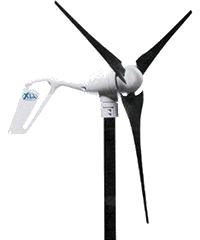
In recent years the financial viability of domestic wind turbines has come into question
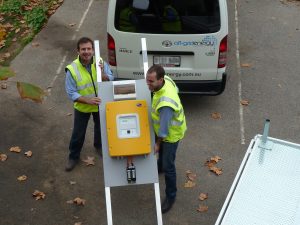
A brief history of how Off-Grid Energy Australia began and it’s early development stages, awards and accomplishments
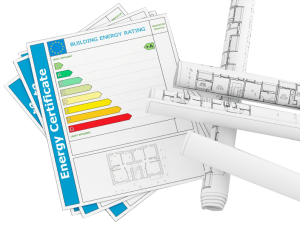
When living off-grid, you rely entirely on solar panels and batteries, so it’s critical to know exactly how much electricity you’ll need, and when you’re going to need it.
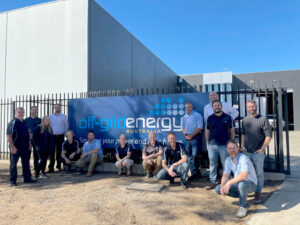
Meet some of the key people who help to run Off-Grid Energy Australia!
Off-Grid Energy Australia · Securing your power and your future
Electrical Contractor Licenses: VIC REC-31913, TAS 15608294, WA EC15901, SA PGE278927, NSW 279181C